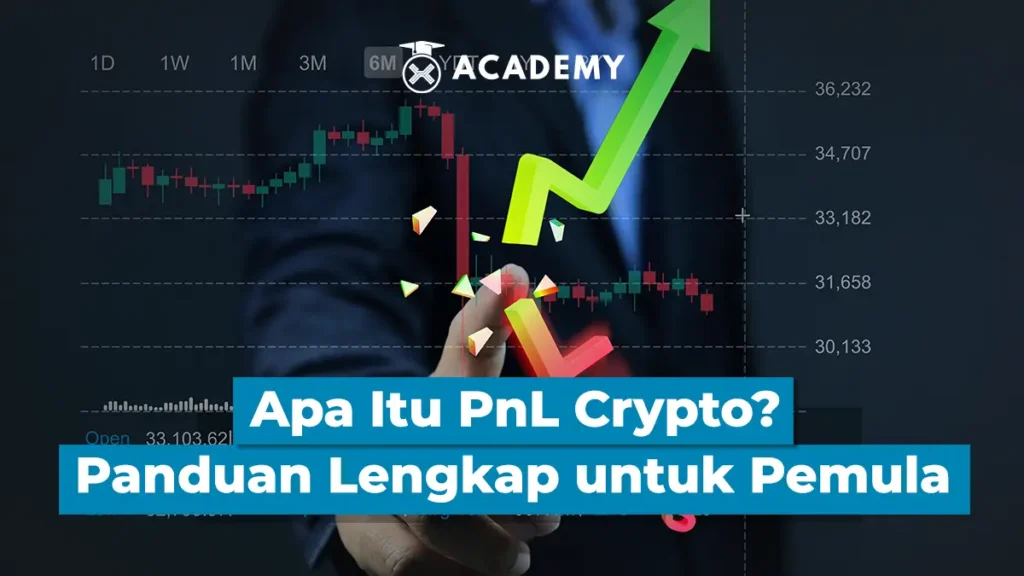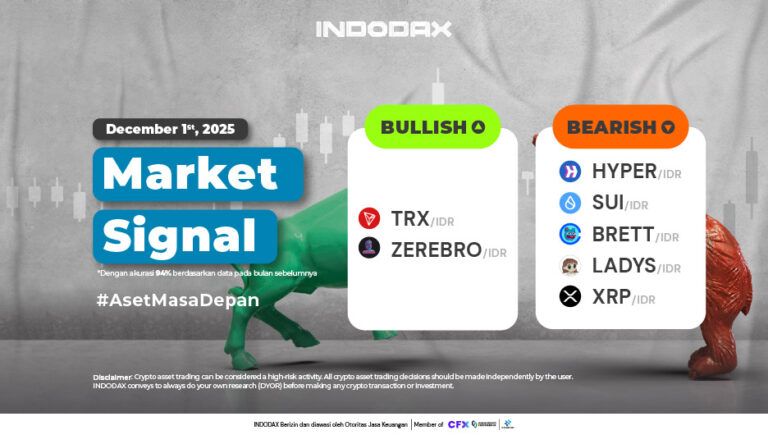Anyone who has been involved in trading in traditional finance is likely familiar with profit and loss (PnL). But is PnL the same in the cryptocurrency world?
The ability to understand terms such as mark-to-market (MTM), realized PnL, and unrealized PnL will help develop a better understanding of one’s crypto assets.
Without a well-defined process for gaining insight into gains or losses, trading crypto assets can feel confusing, and traders may struggle with what they are doing.
PnL itself reflects the change in value of a trader’s position over a period of time. Now, to understand more about what PnL is in crypto trading, the types, and how to calculate it, see the following review.

What is PnL in Crypto Investing?
Profit and Loss or PnL is a key indicator used in trading, including in the crypto market. PnL measures the net financial result of a trading or investment position over a given period.
To calculate it, investors simply subtract the cost of purchasing the asset from the total revenue earned when the asset is sold. If the PnL value is positive, this means that the investor is making a profit on the investment.
However, conversely, a negative PnL value indicates a loss, where the costs incurred are greater than the income generated from the investment.
PnL itself is an important tool in assessing the financial condition and profitability of a trading or investment portfolio.
Types of PnL in Crypto Trading
Please note that in crypto trading, Profit and Loss or PnL is divided into the following two types:
1. Realized PnL
Realized PnL is the profit or loss incurred from a completed crypto trade. Realized PnL is necessary in assessing the effectiveness of a trading strategy as well as used in tax calculations.
While realized gains are subject to capital gains tax, realized losses can be used to offset capital gains and reduce taxes payable.
2. Unrealized PnL
Unrealized PnL is the profit or loss derived from trades that are still active and not yet closed. Unrealized PnL reflects the difference between an asset’s purchase price (entry price) and its current market value (index price).
Often referred to as “paper profit or loss”, unrealized PnL shows the profit or loss that has not been realized because the investor has not sold the asset.
Unrealized PNL will turn into Realized PNL when the trader decides to close the position or sell the asset at the current market price.
Frequently Used PnL Calculation Methods
To determine the PnL in a crypto asset, a trader needs to find the difference between the initial cost of acquiring a digital coin and the current market value of the same coin. Some methods for calculating PnL in crypto assets are as follows:
1. FIFO (First In, First Out)
The FIFO (First In, First Out) method requires the seller to use the price of the asset from when the asset was first purchased. Here is the process for calculating PnL using the FIFO method:
- To determine the initial cost of a crypto asset, multiply the purchase price per unit by the number of units sold
- To determine the current market value of the asset sold, multiply the current market price per unit by the number of units sold
- To find PnL, subtract the initial cost from the current market value
For example, Mr. A first bought 1 ETH for $1,100 and a few days later bought another 1 ETH for $800. A year later, he sells 1 ETH for $1,200.
Since the trader originally bought ETH for $1,100, this price would be considered the initial cost. Using the FIFO method, Frans can calculate PnL as follows:
- Frans initial fee = (1 ETH x $1,100) = $1,100
- Current market value = (1 ETH x $1,200) = $1,200
- PnL = $1,200 – $1,100 = $100 (profit)
2. LIFO (Last In, First Out)
The LIFO (Last In, First Out) method requires the seller to use the most recent purchase price of an asset in its calculations. Other aspects are similar to the FIFO method. The following is the calculation of PnL using the LIFO method with the same example, namely:
- Frans initial fee = (1 ETH x $800) = $800
- Current market value = (1 ETH x $1,200) = $1,200
- PnL = $1,200 – $800 = $400 (profit)
3. YTD (Year to Date)
YTD (Year-To-Date) is a way to measure the performance of an investment in crypto assets from the beginning of the year to the current date.
Investors who regularly buy and hold crypto assets over the years can find out the unrealized gains through YTD calculations.
Traders only need to calculate the value of the portfolio at the beginning and end of the year and compare these values. This calculation can be based on a calendar year or fiscal year, depending on individual preferences or needs.
For example, one owns Cardano (ADA) worth $1,000 on January 1, 2022 and ADA worth $1,600 on January 1, 2023. In this case, the unrealized gain is $600.
The unrealized gains indicate returns that have not been converted into cash or cash equivalents, such as time deposits.
How to Calculate PnL in Crypto Investing
To assess the performance of a portfolio in crypto trading, here is how to calculate PnL which is important to understand, among others:
- Collect key data, including purchase price, sale price, and transaction costs (such as commissions)
- Calculate the PnL for each transaction made
- Add up all the PnL of the transactions to get the total PnL
- Evaluate the portfolio performance based on the total PnL obtained
Here are examples of how to calculate realized PnL and unrealized PnL that you need to know:
1. Realized PnL
Suppose if the buying price to purchase X amount of Polka dots (DOT) was $70 and the selling price was $105 then the PnL for the period would be $35, indicating a profit of $35.
However, if the closing price of the trade was $55 then the PnL would be $15, but this would reflect a loss.
2. Unrealized PnL
Raymond has purchased ETH contracts with an average purchase price of $1,900. Currently, the mark price of ETH is $1,600. Raymond’s Unrealized PnL is the difference between the average purchase price and the mark price.
Unrealized PnL = $1,900 – $1,600 = $300

Strategies to Maximize PnL in Crypto Investments
Below are a number of strategies that can help investors optimize PnL in crypto investments, including:
1. Understand Crypto Asset Fundamentals
Before investing, it is important to understand the basics of the crypto asset you want to buy. The goal is so that investors can make better decisions and for that you need to learn how to analyze crypto fundamentals well, which you can read about here.
2. Portfolio Diversification
Avoid placing all investments in one asset. Diversify your portfolio with different types of crypto assets to reduce risk.
3. Use of Stop-Loss Orders
Stop–loss orders can limit losses if the asset price declines, serving to protect investments from large declines.
4. Effective Risk Management
Good risk management is essential to successful crypto investing. Be sure to understand the risks involved before investing.
5. Stay Up-to-Date with Market Developments
Given the constant changes in the crypto market, it is important to stay up to date with the latest news and developments in order to make informed decisions.
Conclusion
In conclusion, PnL (Profit and Loss) is a very important tool in evaluating crypto investment performance.
By calculating PnL, investors can find out the profit or loss from each transaction and measure the effectiveness of their overall investment strategy.
PnL provides a clear picture of investment progress over time and allows investors to evaluate whether they are achieving their desired financial goals.
To maximize PnL and improve crypto portfolio performance, investors must understand the basics of the crypto assets they purchase. Having in-depth knowledge of assets will support making wiser investment decisions.
Additionally, diversifying a portfolio with various crypto assets can reduce risk and protect the portfolio from market volatility.
Implementing stop-loss orders is also important to limit potential losses if asset prices fall sharply, as well as carrying out effective risk management to manage potential losses.
Lastly, staying up-to-date with the latest news and developments in the crypto market will help in making better decisions and keeping the portfolio relevant.
By following these steps, investors can optimize their PnL and improve the overall performance of their crypto portfolio.
So, that was a complete discussion about what PnL is in the crypto world, starting from the understanding to the strategies that you can learn, but remember that this article is not as investment advice.
And for those of you who want to read other interesting crypto articles about the crypto world, you can read them at the Crypto Academy only at INDODAX Academy, a trusted source for learning about the crypto world
Come on, make an easy and safe crypto investment on INDODAX
So, now you understand what PnL is in crypto trading, its types, and how to calculate it.
Furthermore, for those of you who are interested in investing in crypto safely, easily and profitably, such as buying bitcoin, buying ethereum,, or buying other crypto assets, then you can buy it via INDODAX Market.
Apart from that, to make it easier for you to trade crypto safely and easily, you can also download the best crypto application from INDODAX on the Google Play Store or via the App Store right now!
As additional information, INDODAX is the most popular and best crypto asset buying and selling platform in Indonesia to date which has more than 6,000,000 members.
INDODAX, which is a pioneer of crypto asset trading in Indonesia, also provides various types of crypto assets, such as Bitcoin, Ethereum, Dogecoin, and also other crypto assets.
Furthermore, INDODAX is always committed to providing easy access for investors and traders to enter the crypto market.
As a disclaimer, it is also important to remember that investing in crypto assets is the same as other types of investment, namely that it contains its own risks.
The risks, among other things, are related to fluctuations in the value of crypto assets and the high level of volatility of crypto assets.
Therefore, it is highly recommended for traders and investors to carry out in-depth research first before investing in crypto assets.
So, come on, immediately invest in crypto assets only at INDODAX starting now!
FAQ
1. What is PnL in crypto investment?
PnL, or Profit and Loss, is a performance indicator that shows the profit or loss of a crypto investment in a certain period.
2. What is the difference between Realized PnL and Unrealized PnL?
Realized PnL is profit or loss from transactions that have been closed, while Unrealized PnL is profit or loss from transactions that are still open.
3. How to calculate PnL in crypto trading?
Calculate PnL by subtracting the cost of purchasing the asset from the total income when selling it, then adding up all the PnL results from each transaction.
4. What method is used to calculate PnL?
Common methods for calculating PnL include FIFO (First In, First Out), LIFO (Last In, First Out), and YTD (Year to Date).
5. How to maximize PnL in crypto investment?
Maximizing PnL can be done by understanding asset fundamentals, diversifying your portfolio, using stop-loss orders, good risk management, and staying up-to-date with market developments.





 Polkadot 8.90%
Polkadot 8.90%
 BNB 0.51%
BNB 0.51%
 Solana 4.86%
Solana 4.86%
 Ethereum 2.37%
Ethereum 2.37%
 Cardano 1.18%
Cardano 1.18%
 Polygon Ecosystem Token 2.14%
Polygon Ecosystem Token 2.14%
 Tron 2.85%
Tron 2.85%
 Market
Market


